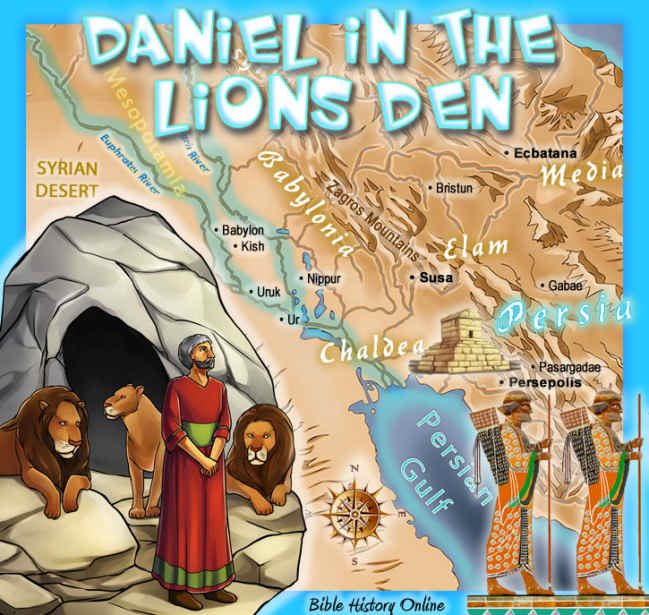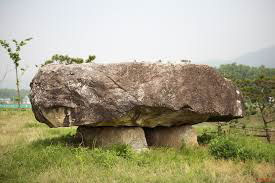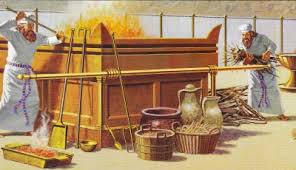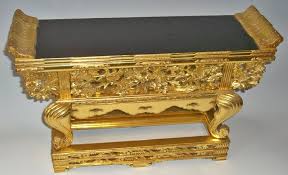+ Blue Letter Bible/KJV + 개역한글 성경구절
글 수 8
2024.5.20 16:52:17

▶ 제단 Altar.
A structure on which to offer sacrifices to God: imitated by the heathen in honour of their false gods. The first altar we read of was built by Noah on leaving the ark, on which he offered burnt offerings of every clean beast and clean fowl. Gen. 8:20. Abraham, Isaac and Jacob also built altars to the Lord: these would have been constructed of stone or earth, but it is remarkable that we seldom read of their offering sacrifices on them. At times it is simply said they built an altar unto the Lord and at other times they built an altar and called upon the name of the Lord. The altars appear to have been erected as places of drawing near to God, of which sacrifice was the basis. (창08:20 제단

Moses was told that in all places where God recorded His name they should build an altar of wood or of stone and offer thereon sheep and oxen for burnt offerings and peace offerings; but such altars if made of stone were not to be made of hewn stone; for had they lifted up a tool upon it, it would have been defiled. Ex. 20:25, 26. There must be nothing of man's handiwork in approaching to God: a principle, alas, grossly violated in the professing church of God! It is added, "neither shalt thou go up by steps unto mine altar, that thy nakedness be not discovered thereon." Man's contrivance is here forbidden, for in divine things anything of his only manifests the utter shamelessness of that which springs from fallen nature: cf. Col. 2:20-23. When the tabernacle was made, minute instructions were given to Moses, and he was to make everything as had been shown him in the mount. (출20:25, 26 (골02:20-23
The Brazen Altar 놋제단
was to be made of shittim wood overlaid with brass, whence its name; it was to be 3 cubits high and 5 cubits on each side.* Ex. 27:1-8. In the temple built by Solomon this altar was made of brass, and was 10 cubits high and 20 cubits in length and breadth (same size as the holiest of all). 2 Chr. 4:1. See Ezek. 43:13-17 for the altar in the future temple. The brazen altar was also called "the altar of burnt offering:" on it a fire was constantly burning, Lev. 6:9, and on it the offerings were consumed, that is, on the 'grate' that was placed in its midst. It had horns at each of its corners, on which the blood of the sin offering was placed. Thither men fled for refuge and caught hold of the horns for safety. 1 Kings 1:50, 51: cf. Ex. 21:14. The position of the brazen altar arrested the offerer as he entered the court, and pointed out that the only way of access to the Lord was by a sacrifice. Death must take place ere fallen man could enter the dwelling place of God.
(출27:1-8 2 (대하04:1 (겔43:13-17 (레06:9 (왕상01:50, 51: (출21:14

*The number 5 suggests responsibility thus 5 senses; 5 fingers, and 5 toes - man in exercise and responsibility. The ALTAR is the symbol of Christ and His work, which meets responsibility.
In the N.T. the principle is brought out, that to eat of a sacrifice manifests communion with the altar on which the sacrifice is made. So that one cannot drink the Lord's cup and the cup of demons, nor partake of the Lord's table and of the table of demons. 1 Cor. 10:18-21. (고전10:18-21
To the Hebrew believers it was said, "We have an altar whereof they have no right to eat which serve the tabernacle." Heb. 13:10. This refers to the sin-offering, whose blood was carried into the holiest, the flesh of which was not eaten, but burnt without the camp. Jesus had suffered without the gate, and hence to be in company with Him, believers were instructed to quit the camp; that is, to leave Judaism. As still serving the tabernacle they had no right to the christian's altar. (히13:10
In the Revelation there is the golden altar 금 제단 in heaven, and much incense ascends with the prayers of the saints; but fire from the brazen altar is cast upon the earth, and it is followed by judgements, Rev. 8:3-5: cf. also Rev. 9:13. And John heard the altar say (as the passage should read) "Yea, Lord God Almighty, true and righteous are thy judgements," Rev. 16:7: this is no doubt the brazen altar, cf. chap. 6:9, and Isa. 6:6.
(계08:3-5: (계09:13. (계16:7 (사06:6

The Altar of Incense
was made of shittim wood, overlaid with pure gold. Ex. 30:1-5; Ex. 37:25-28. It was in length and in breadth 1 cubit, and in height 2 cubits. In Solomon's temple this altar was made of cedar overlaid with gold, but its size is not given. In the temple described by Ezekiel the altar of incense is 2 cubits in length, and 3 cubits in height. Ezek. 41:22. The Altar of Incense is also called the GOLDEN ALTAR. Its situation was in the holy place, with the golden candlestick and the table of showbread. On this altar holy incense was to be burnt both morning and evening, typical of the Lord Jesus being a perpetual sweet savour to God. It was by the side of this altar that the angel appeared to Zacharias when he announced the conception and birth of John the Baptist. Luke 1:11.
(출30:1-5 (출37:25-28 (겔41:22
Altar to the unknown God.
Whatever the origin of this inscription on the altar at Athens, it afforded the apostle Paul an admirable thesis for his discourse to the idolatrous Athenians. It was this very God he had come to reveal to them. Acts 17:23. (행17:23 단
--- Morrish Bible Dictionary
개역한글KHRV( 120일1독, 1년1독, 권별, 성경통독 )
STUDY - 구절(WESLEY), 단락(MATTHEW), 읽기(Wayne),
Dictionary - Chapter, OT구약, NT신약, 테마별,
(*.117.204.3)
|
.
성경연대표
1.창조
2.족장
3.출애굽
4.광야
5.정복
6.사사
7.통일왕국
8.분열왕국
9.포로
10.포로귀환
11.중간
12.예수
13.초대교회
14.세계선교
관련그림.지도 1.창조
2.족장
3.출애굽
4.광야
5.정복
6.사사
7.통일왕국
8.분열왕국
9.포로
10.포로귀환
11.중간
12.예수
13.초대교회 Ani
1창세기[Genesis] 2출애굽기[Exodus] 3레위기[Leviticus] 4민수기[Numbers] 5신명기[Deuteronomy] 6여호수아[Joshua] 7사사기[Judges] 8룻기[Ruth] 9사무엘상[I Samuel] 10사무엘하[II Samuel] 11열왕기상[I Kings] 12열왕기하[II Kings] 13역대상[I Chronicles] 14역대하[II Chronicles] 15에스라[Ezra] 16느헤미아[Nehemiah] 17에스더[Esther] 18욥기[Job] 19시편[Psalms] 20잠언[Proverbs] 21전도서[Ecclesiastes] 22아가[Song of Solomon] 23이사야[Isaiah] 24예레미야[Jeremiah] 5예레미아애가[Lamentations] 26에스겔[Ezekiel] 27다니엘[Daniel] 28호세아[Hosea] 29요엘[Joel] 30아모스[Amos] 31오바댜[Obadiah] 32요나[Jonah] 33미가[Micah] 34나훔[Nahum] 35하박국[Habakkuk] 36스바냐[Zephaniah] 37학개[Haggai] 38스가랴[Zechariah] 39말라기[Malachi] 40마태복음[Matthew] 41마가복음[Mark] 42누가복음[Luke] 43요한복음[John] 44사도행전[Acts] 45로마서[Romans] 46고린도전서[I Corinthians] 47고린도후서[II Corinthians] 48갈라디아서[Galatians] 49에베소서[Ephesians] 50빌립보서[Philippians] 51골로새서[Colossians] 52데살로니가전서[I Thessalonian] 53데살로니가후서[2 Thessalonian] 54디모데전서[I Timothy] 55디모데후서[II Timothy] 56디도서[Titus] 57빌레몬서[Philemon] 58히브리서[Hebrews] 59야고보서[James] 60베드로전서[I Peter] 61베드로후서[II Peter] 62요한일서[I John] 63요한이서[II John] 64요한삼서[III John] 65유다서[Jude] 66요한계시록[Revelation]

 , 성경권별
, 성경권별 

